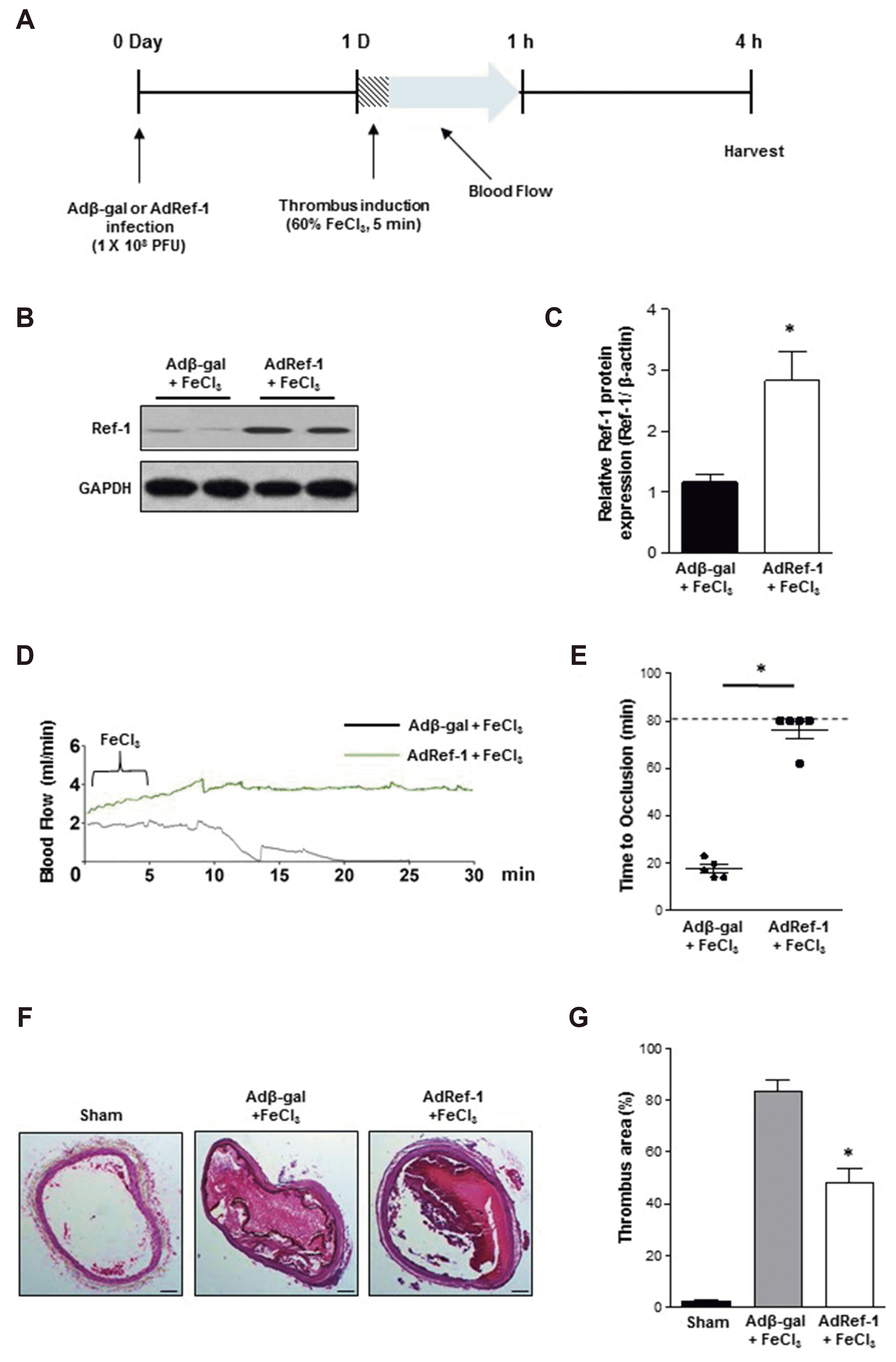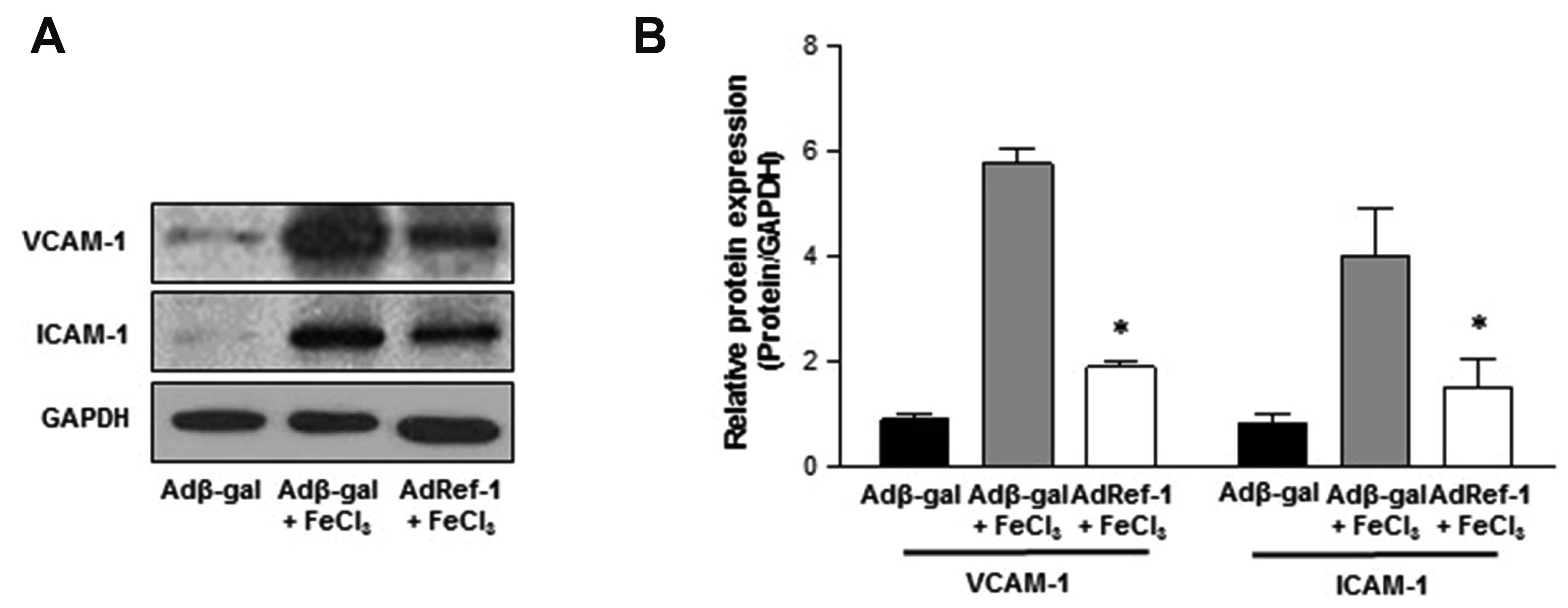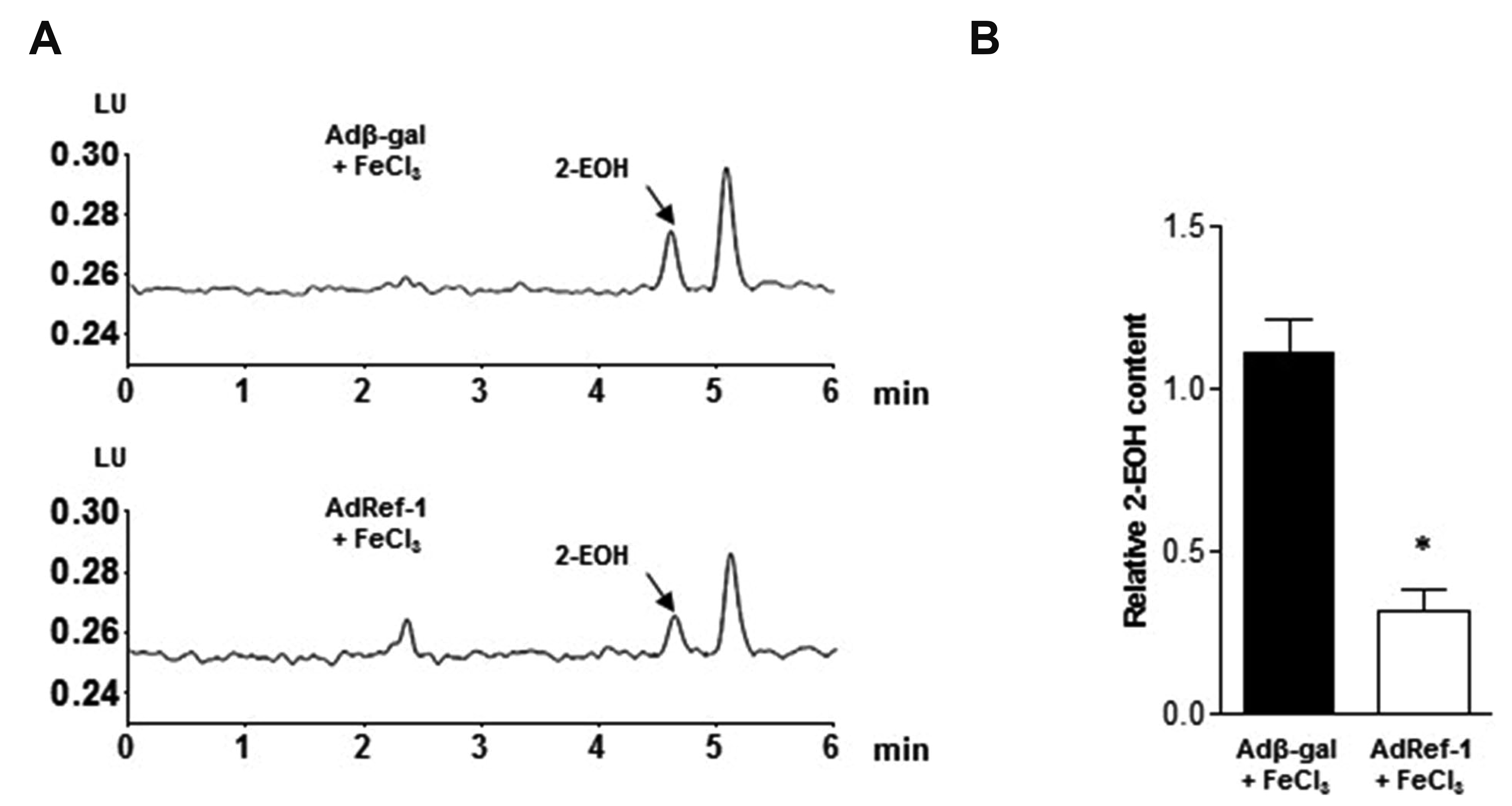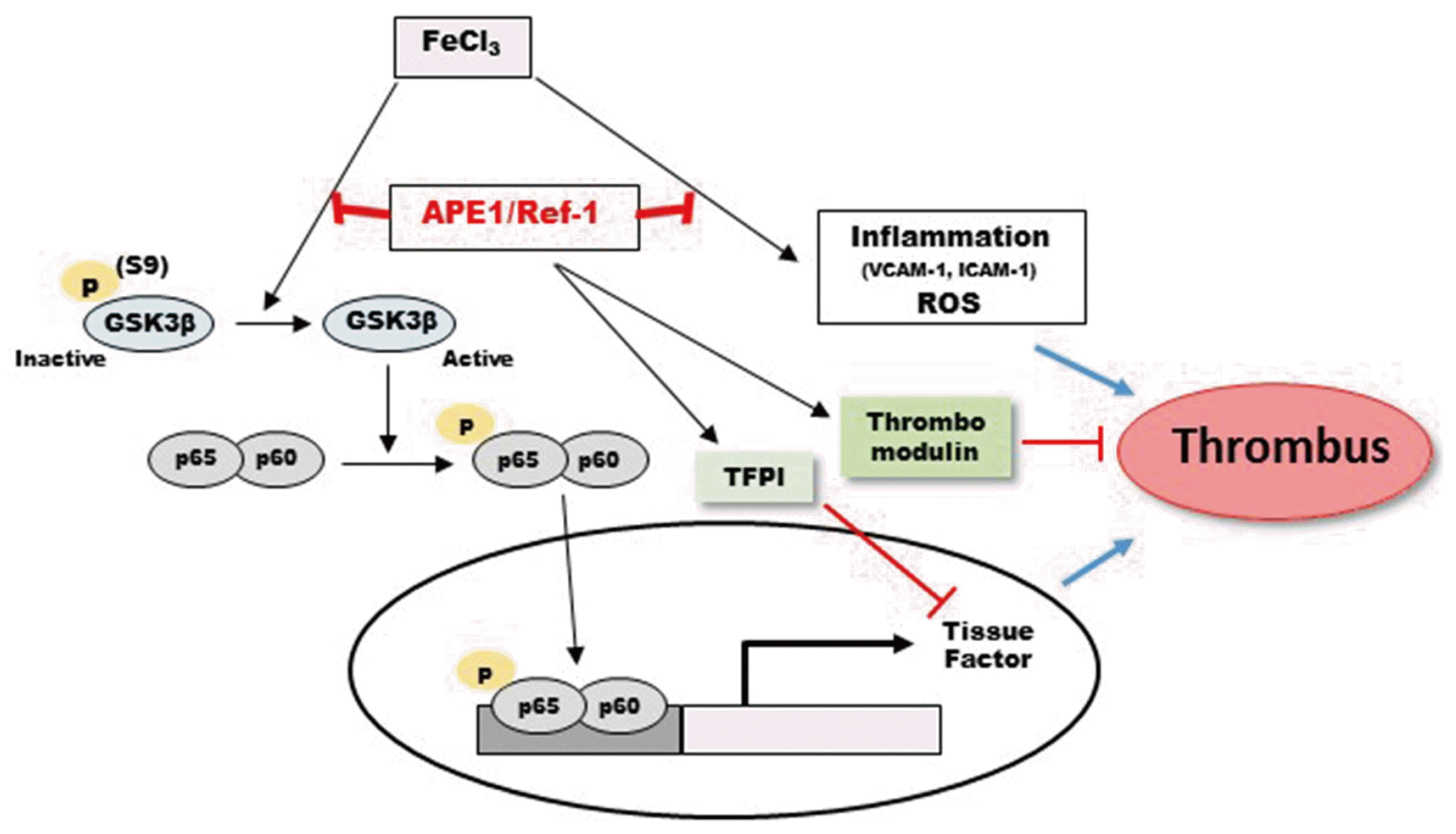2. Blanco M, Sobrino T, Montaner J, Medrano V, Jiménez C, Masjuán J, Gómez-Escalonilla C, de Luis P, Arboix A, Castillo J. MITICO Study. 2010; Stroke with polyvascular atherothrombotic disease. Atherosclerosis. 208:587–592. DOI:
10.1016/j.atherosclerosis.2009.07.041. PMID:
19695570.


3. Santarius T, Menon DK. 2003; Images in clinical medicine. Carotid-artery thrombosis secondary to basal skull fracture. N Engl J Med. 349:e5. DOI:
10.1056/ENEJMicm020664. PMID:
12890856.
4. Stoll G, Kleinschnitz C, Nieswandt B. 2008; Molecular mechanisms of thrombus formation in ischemic stroke: novel insights and targets for treatment. Blood. 112:3555–3562. DOI:
10.1182/blood-2008-04-144758. PMID:
18676880.


5. Zhang W, Wang J, Wang H, Tang R, Belcher JD, Viollet B, Geng JG, Zhang C, Wu C, Slungaard A, Zhu C, Huo Y. 2010; Acadesine inhibits tissue factor induction and thrombus formation by activating the phosphoinositide 3-kinase/Akt signaling pathway. Arterioscler Thromb Vasc Biol. 30:1000–1006. DOI:
10.1161/ATVBAHA.110.203141. PMID:
20185792. PMCID:
PMC3626455.



6. Li YD, Ye BQ, Zheng SX, Wang JT, Wang JG, Chen M, Liu JG, Pei XH, Wang LJ, Lin ZX, Gupta K, Mackman N, Slungaard A, Key NS, Geng JG. 2009; NF-kappaB transcription factor p50 critically regulates tissue factor in deep vein thrombosis. J Biol Chem. 284:4473–4483. DOI:
10.1074/jbc.M806010200. PMID:
19095643. PMCID:
PMC2640971.
7. Johnson GJ, Leis LA, Bach RR. 2009; Tissue factor activity of blood mononuclear cells is increased after total knee arthroplasty. Thromb Haemost. 102:728–734. DOI:
10.1160/TH09-04-0261. PMID:
19806259.


10. Li S, Chen H, Ren J, Geng Q, Song J, Lee C, Cao C, Zhang J, Xu N. 2014; MicroRNA-223 inhibits tissue factor expression in vascular endothelial cells. Atherosclerosis. 237:514–520. DOI:
10.1016/j.atherosclerosis.2014.09.033. PMID:
25463083.

11. Dong R, Chen W, Feng W, Xia C, Hu D, Zhang Y, Yang Y, Wang DW, Xu X, Tu L. 2015; Exogenous bradykinin inhibits tissue factor induction and deep vein thrombosis via activating the eNOS/phosphoinositide 3-kinase/Akt signaling pathway. Cell Physiol Biochem. 37:1592–1606. DOI:
10.1159/000438526. PMID:
26517864.


12. Schabbauer G, Tencati M, Pedersen B, Pawlinski R, Mackman N. 2004; PI3K-Akt pathway suppresses coagulation and inflammation in endotoxemic mice. Arterioscler Thromb Vasc Biol. 24:1963–1969. DOI:
10.1161/01.ATV.0000143096.15099.ce. PMID:
15319270.


13. Guha M, Mackman N. 2002; The phosphatidylinositol 3-kinase-Akt pathway limits lipopolysaccharide activation of signaling pathways and expression of inflammatory mediators in human monocytic cells. J Biol Chem. 277:32124–32132. DOI:
10.1074/jbc.M203298200. PMID:
12052830.

14. Winckers K, ten Cate H, Hackeng TM. 2013; The role of tissue factor pathway inhibitor in atherosclerosis and arterial thrombosis. Blood Rev. 27:119–132. DOI:
10.1016/j.blre.2013.03.001. PMID:
23631910.


15. Becker L, Prado K, Foppa M, Martinelli N, Aguiar C, Furian T, Clausell N, Rohde LE. 2012; Endothelial dysfunction assessed by brachial artery ultrasound in severe sepsis and septic shock. J Crit Care. 27:316.e9–316.e14. DOI:
10.1016/j.jcrc.2011.08.002. PMID:
22172795.

16. Karbach S, Wenzel P, Waisman A, Munzel T, Daiber A. 2014; eNOS uncoupling in cardiovascular diseases--the role of oxidative stress and inflammation. Curr Pharm Des. 20:3579–3594. DOI:
10.2174/13816128113196660748. PMID:
24180381.

17. Steven S, Münzel T, Daiber A. 2015; Exploiting the pleiotropic antioxidant effects of established drugs in cardiovascular disease. Int J Mol Sci. 16:18185–18223. DOI:
10.3390/ijms160818185. PMID:
26251902. PMCID:
PMC4581241.



18. Daiber A, Steven S, Weber A, Shuvaev VV, Muzykantov VR, Laher I, Li H, Lamas S, Münzel T. 2017; Targeting vascular (endothelial) dysfunction. Br J Pharmacol. 174:1591–1619. DOI:
10.1111/bph.13517. PMID:
27187006. PMCID:
PMC5446575.

19. Steven S, Frenis K, Oelze M, Kalinovic S, Kuntic M, Bayo Jimenez MT, Vujacic-Mirski K, Helmstädter J, Kröller-Schön S, Münzel T, Daiber A. 2019; Vascular Inflammation and oxidative stress: major triggers for cardiovascular disease. Oxid Med Cell Longev. 2019:7092151. DOI:
10.1155/2019/7092151. PMID:
31341533. PMCID:
PMC6612399.

20. Cimmino G, Cirillo P, Ragni M, Conte S, Uccello G, Golino P. 2015; Reactive oxygen species induce a procoagulant state in endothelial cells by inhibiting tissue factor pathway inhibitor. J Thromb Thrombolysis. 40:186–192. DOI:
10.1007/s11239-015-1199-1. PMID:
25712553.


21. Lee YR, Joo HK, Jeon BH. 2020; The biological role of apurinic/apyrimidinic endonuclease1/redox factor-1 as a therapeutic target for vascular inflammation and as a serologic biomarker. Biomedicines. 8:57. DOI:
10.3390/biomedicines8030057. PMID:
32164272. PMCID:
PMC7148461.


22. Hao J, Du H, Liu F, Lu JC, Yang XC, Cui W. 2019; Apurinic/apyrimidinic endonuclease/redox factor 1 (APE1) alleviates myocardial hypoxia-reoxygenation injury by inhibiting oxidative stress and ameliorating mitochondrial dysfunction. Exp Ther Med. 17:2143–2151. DOI:
10.3892/etm.2019.7212. PMID:
30867702. PMCID:
PMC6395998.



23. Park MS, Choi S, Lee YR, Joo HK, Kang G, Kim CS, Kim SJ, Lee SD, Jeon BH. 2016; Secreted APE1/Ref-1 inhibits TNF-α-stimulated endothelial inflammation via thiol-disulfide exchange in TNF receptor. Sci Rep. 6:23015. DOI:
10.1038/srep23015. PMID:
26964514. PMCID:
PMC4786854.

24. Joo HK, Lee YR, Lee EO, Park MS, Choi S, Kim CS, Park JB, Jeon BH. 2019; The extracellular role of Ref-1 as anti-inflammatory function in lipopolysaccharide-induced septic mice. Free Radic Biol Med. 139:16–23. DOI:
10.1016/j.freeradbiomed.2019.05.013. PMID:
31100475.


25. Lee HM, Jeon BH, Won KJ, Lee CK, Park TK, Choi WS, Bae YM, Kim HS, Lee SK, Park SH, Irani K, Kim B. 2009; Gene transfer of redox factor-1 inhibits neointimal formation: involvement of platelet-derived growth factor-beta receptor signaling via the inhibition of the reactive oxygen species-mediated Syk pathway. Circ Res. 104:219–227. 5p following 227DOI:
10.1161/CIRCRESAHA.108.178699. PMID:
19038866.

27. Perlman H, Luo Z, Krasinski K, Le Roux A, Mahfoudi A, Smith RC, Branellec D, Walsh K. 1999; Adenovirus-mediated delivery of the Gax transcription factor to rat carotid arteries inhibits smooth muscle proliferation and induces apoptosis. Gene Ther. 6:758–763. DOI:
10.1038/sj.gt.3300893. PMID:
10505098.


28. Jeon BH, Gupta G, Park YC, Qi B, Haile A, Khanday FA, Liu YX, Kim JM, Ozaki M, White AR, Berkowitz DE, Irani K. 2004; Apurinic/apyrimidinic endonuclease 1 regulates endothelial NO production and vascular tone. Circ Res. 95:902–910. DOI:
10.1161/01.RES.0000146947.84294.4c. PMID:
15472121.

29. Lee SK, Chung JI, Park MS, Joo HK, Lee EJ, Cho EJ, Park JB, Ryoo S, Irani K, Jeon BH. 2011; Apurinic/apyrimidinic endonuclease 1 inhibits protein kinase C-mediated p66shc phosphorylation and vasoconstriction. Cardiovasc Res. 91:502–509. DOI:
10.1093/cvr/cvr095. PMID:
21467074. PMCID:
PMC3139447.



30. Kurz KD, Main BW, Sandusky GE. 1990; Rat model of arterial thrombosis induced by ferric chloride. Thromb Res. 60:269–280. DOI:
10.1016/0049-3848(90)90106-M. PMID:
2087688.


31. Robinson MA, Welsh DC, Bickel DJ, Lynch JJ, Lyle EA. 2003; Differential effects of sodium nitroprusside and hydralazine in a rat model of topical FeCl
3-induced carotid artery thrombosis. Thromb Res. 111:59–64. DOI:
10.1016/j.thromres.2003.08.012. PMID:
14644081.

32. Zielonka J, Hardy M, Kalyanaraman B. 2009; HPLC study of oxidation products of hydroethidine in chemical and biological systems: ramifications in superoxide measurements. Free Radic Biol Med. 46:329–338. DOI:
10.1016/j.freeradbiomed.2008.10.031. PMID:
19026738. PMCID:
PMC3375818.


33. Di Santo A, Amore C, Dell'Elba G, Manarini S, Evangelista V. 2011; Glycogen synthase kinase-3 negatively regulates tissue factor expression in monocytes interacting with activated platelets. J Thromb Haemost. 9:1029–1039. DOI:
10.1111/j.1538-7836.2011.04236.x. PMID:
21320285. PMCID:
PMC3091995.



34. Breitenstein A, Camici GG, Tanner FC. 2009; Tissue factor: beyond coagulation in the cardiovascular system. Clin Sci. 118:159–172. DOI:
10.1042/CS20080622. PMID:
19845509.

35. Eisenreich A, Malz R, Pepke W, Ayral Y, Poller W, Schultheiss HP, Rauch U. 2009; Role of the phosphatidylinositol 3-kinase/protein kinase B pathway in regulating alternative splicing of tissue factor mRNA in human endothelial cells. Circ J. 73:1746–1752. DOI:
10.1253/circj.CJ-99-0225. PMID:
19597299.


36. Risbud MV, Fertala J, Vresilovic EJ, Albert TJ, Shapiro IM. 2005; Nucleus pulposus cells upregulate PI3K/Akt and MEK/ERK signaling pathways under hypoxic conditions and resist apoptosis induced by serum withdrawal. Spine. 30:882–889. DOI:
10.1097/01.brs.0000159096.11248.6d. PMID:
15834331.


37. Olivares-Silva F, Landaeta R, Aránguiz P, Bolivar S, Humeres C, Anfossi R, Vivar R, Boza P, Muñoz C, Pardo-Jiménez V, Peiró C, Sánchez-Ferrer CF, Díaz-Araya G. 2018; Heparan sulfate potentiates leukocyte adhesion on cardiac fibroblast by enhancing Vcam-1 and Icam-1 expression. Biochim Biophys Acta Mol Basis Dis. 1864:831–842. DOI:
10.1016/j.bbadis.2017.12.002. PMID:
29222072.

38. Zibara K, Chignier E, Covacho C, Poston R, Canard G, Hardy P, McGregor J. 2000; Modulation of expression of endothelial intercellular adhesion molecule-1, platelet-endothelial cell adhesion molecule-1, and vascular cell adhesion molecule-1 in aortic arch lesions of apolipoprotein E-deficient compared with wild-type mice. Arterioscler Thromb Vasc Biol. 20:2288–2296. DOI:
10.1161/01.ATV.20.10.2288. PMID:
11031217.


41. Qiao J, Arthur JF, Gardiner EE, Andrews RK, Zeng L, Xu K. 2018; Regulation of platelet activation and thrombus formation by reactive oxygen species. Redox Biol. 14:126–130. DOI:
10.1016/j.redox.2017.08.021. PMID:
28888895. PMCID:
PMC5596263.


43. Lu J, Xiang G, Liu M, Mei W, Xiang L, Dong J. 2015; Irisin protects against endothelial injury and ameliorates atherosclerosis in apolipoprotein E-Null diabetic mice. Atherosclerosis. 243:438–448. DOI:
10.1016/j.atherosclerosis.2015.10.020. PMID:
26520898.


45. Ren M, Li R, Luo M, Chen N, Deng X, Yan K, Zeng M, Wu J. 2014; Endothelial cells but not platelets are the major source of Toll-like receptor 4 in the arterial thrombosis and tissue factor expression in mice. Am J Physiol Regul Integr Comp Physiol. 307:R901–R907. DOI:
10.1152/ajpregu.00324.2014. PMID:
25275013.

47. Angkeow P, Deshpande SS, Qi B, Liu YX, Park YC, Jeon BH, Ozaki M, Irani K. 2002; Redox factor-1: an extra-nuclear role in the regulation of endothelial oxidative stress and apoptosis. Cell Death Differ. 9:717–725. DOI:
10.1038/sj.cdd.4401025. PMID:
12058277.


48. Ozaki M, Suzuki S, Irani K. 2002; Redox factor-1/APE suppresses oxidative stress by inhibiting the rac1 GTPase. FASEB J. 16:889–890. DOI:
10.1096/fj.01-0664fje. PMID:
12039869.

49. Guo Y, Chen J, Zhao T, Fan Z. 2008; Granzyme K degrades the redox/DNA repair enzyme Ape1 to trigger oxidative stress of target cells leading to cytotoxicity. Mol Immunol. 45:2225–2235. DOI:
10.1016/j.molimm.2007.11.020. PMID:
18179823.


50. Kim CS, Son SJ, Kim EK, Kim SN, Yoo DG, Kim HS, Ryoo SW, Lee SD, Irani K, Jeon BH. 2006; Apurinic/apyrimidinic endonuclease1/redox factor-1 inhibits monocyte adhesion in endothelial cells. Cardiovasc Res. 69:520–526. DOI:
10.1016/j.cardiores.2005.10.014. PMID:
16325162.

51. Hall JL, Wang X, Van Adamson , Zhao Y, Gibbons GH. 2001; Overexpression of Ref-1 inhibits hypoxia and tumor necrosis factor-induced endothelial cell apoptosis through nuclear factor-kappab-independent and -dependent pathways. Circ Res. 88:1247–1253. DOI:
10.1161/hh1201.091796. PMID:
11420300.

52. Yuk JM, Yang CS, Shin DM, Kim KK, Lee SK, Song YJ, Lee HM, Cho CH, Jeon BH, Jo EK. 2009; A dual regulatory role of apurinic/apyrimidinic endonuclease 1/redox factor-1 in HMGB1-induced inflammatory responses. Antioxid Redox Signal. 11:575–588. DOI:
10.1089/ars.2008.2196. PMID:
18715145.


53. Zhang WJ, Wei H, Hagen T, Frei B. 2007; Alpha-lipoic acid attenuates LPS-induced inflammatory responses by activating the phosphoinositide 3-kinase/Akt signaling pathway. Proc Natl Acad Sci U S A. 104:4077–4082. DOI:
10.1073/pnas.0700305104. PMID:
17360480. PMCID:
PMC1805485.


54. Yu M, Ge C, Zeng W, Mi Y, Zhang C. 2012; Retinoic acid promotes proliferation of chicken primordial germ cells via activation of PI3K/Akt-mediated NF-κB signalling cascade. Cell Biol Int. 36:705–712. DOI:
10.1042/CBI20110542. PMID:
22548360.

55. Sorensen BB, Rao LV, Tornehave D, Gammeltoft S, Petersen LC. 2003; Antiapoptotic effect of coagulation factor VIIa. Blood. 102:1708–1715. DOI:
10.1182/blood-2003-01-0157. PMID:
12738672.


57. Maeda NY, Clavé MM, Bydlowski SP, Lopes AA. 2016; Decreased circulating thrombomodulin is improved by tadalafil therapy in hypoxemic patients with advanced pulmonary arterial hypertension. Thromb Res. 146:15–19. DOI:
10.1016/j.thromres.2016.08.016. PMID:
27564658.


58. Cybulsky MI, Gimbrone MA Jr. 1991; Endothelial expression of a mononuclear leukocyte adhesion molecule during atherogenesis. Science. 251:788–791. DOI:
10.1126/science.1990440. PMID:
1990440.

59. Ambrosio G, Tritto I, Chiariello M. 1995; The role of oxygen free radicals in preconditioning. J Mol Cell Cardiol. 27:1035–1039. DOI:
10.1016/0022-2828(95)90072-1. PMID:
7563100.

60. Golino P, Ragni M, Cirillo P, Avvedimento VE, Feliciello A, Esposito N, Scognamiglio A, Trimarco B, Iaccarino G, Condorelli M, Chiariello M, Ambrosio G. 1996; Effects of tissue factor induced by oxygen free radicals on coronary flow during reperfusion. Nat Med. 2:35–40. DOI:
10.1038/nm0196-35. PMID:
8564835.


61. Tritto I, D'Andrea D, Eramo N, Scognamiglio A, De Simone C, Violante A, Esposito A, Chiariello M, Ambrosio G. 1997; Oxygen radicals can induce preconditioning in rabbit hearts. Circ Res. 80:743–748. DOI:
10.1161/01.RES.80.5.743. PMID:
9130455.

62. Tritto I, Duilio C, Santoro G, Elia PP, Cirillo P, De Simone C, Chiariello M, Ambrosio G. 1998; A short burst of oxygen radicals at reflow induces sustained release of oxidized glutathione from postischemic hearts. Free Radic Biol Med. 24:290–297. DOI:
10.1016/S0891-5849(97)00229-3. PMID:
9433904.


63. Khechai F, Ollivier V, Bridey F, Amar M, Hakim J, de Prost D. 1997; Effect of advanced glycation end product-modified albumin on tissue factor expression by monocytes. Role of oxidant stress and protein tyrosine kinase activation. Arterioscler Thromb Vasc Biol. 17:2885–2890. DOI:
10.1161/01.ATV.17.11.2885. PMID:
9409271.










 PDF
PDF Citation
Citation Print
Print


 XML Download
XML Download